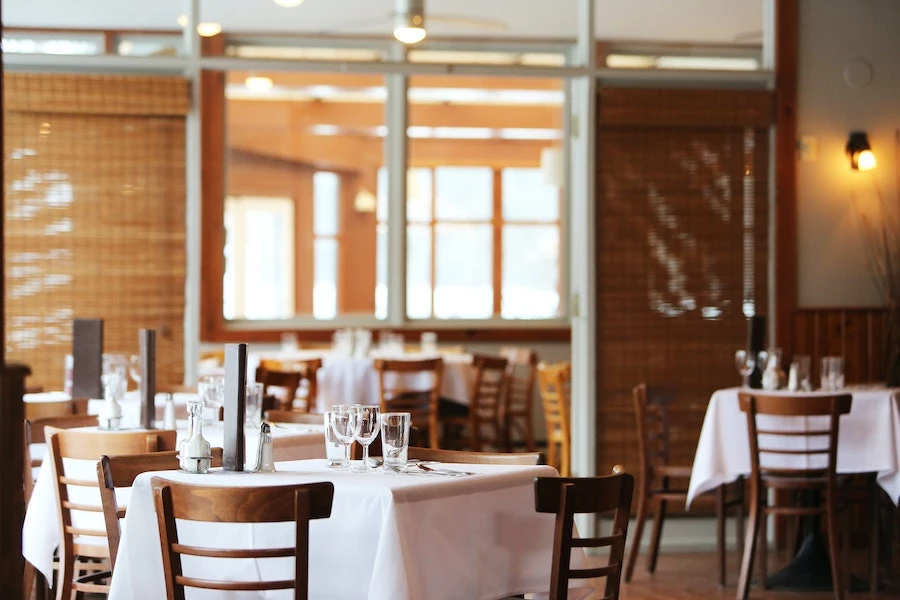
Booths have had a long history in the restaurant community. They went from being the gold standard and the next big trend to a period of irrelevance, only to make a resounding comeback over the past couple of decades.
However, have you ever stopped to wonder what the story of these booths actually is? When did they first come about? What exactly was it about them that made them so commonplace among restaurateurs throughout their heyday? And of course, there’s the most pressing question of all: why’re they coming back so strongly all of a sudden?
Well, if we’re going to discuss restaurant booths from a historical perspective, it’s essential to start at the very beginning. Let us turn back the dial of time and transport you to an era where humanity was teetering between the old ways and the new ones that were looking to disrupt traditional ways of life. To put it plainly, we’re going all the way back to the turn of the 19th century
This is when modern day restaurants first started coming about, mostly thanks to French innovations in culinary science and culture. While commercial eateries have been around for thousands of years, restaurants were unique in that they offered individual tables to patrons instead of having them all sit at communal tables or a separate room entirely.
It’s easy to see why restaurants took off as a concept. They offered a level of privacy that had previously only been reserved for the aristocracy, except this time around commoners and nobles alike could enjoy their meals in peace.
The trend quickly spread all around the world, making it the USA before too long. It’s in the US that the notion of private, personal dining was taken to a whole other level, and that directly led to the addition of the very first booths in restaurants.
Customers quickly started getting used to the idea that they should be able to eat meals at restaurants with at least some degree of personal space. The natural trajectory of consumer wants and needs makes it so that they start expecting older innovations as a given, and they also start to desire an increased provision of the benefits that they have gotten accustomed to.
Personal tables were all well and good, but it was only a matter of time before customers got bored and wanted even more privacy. That might’ve seemed impossible, but in the US some restaurants started treating tabled areas as enclosed spaces and provided curtains that would further boost privacy for those customers that truly desired it.
Such forms of seating arrangements may have ended up becoming the fundamental restaurant going experience around the world, but the Temperance movement of the 1920s combined with a conservative moral panic made it so that curtained spaces in restaurants started to get viewed with suspicious and distrust.
Teetotallers and social conservatives alike started to wonder what people might get up to if they could just draw curtains and get residential levels of privacy in spaces that are supposed to be public. Curtains and screens along with boxed dining areas in general were made illegal, and the Prohibition era made it seem like private dining was going to die a quick yet excruciating death.
The good news is that prohibition was lifted before too long, and customers quickly started to demand that they get their precious privacy back again. Sentiments had also shifted somewhat over the decades, and restaurateurs found that customers now wanted something private yet spacious and roomy.
Hence, the curtains didn’t end up having to come back after all. Instead, business owners tried to enhance the privacy of the boxed seating areas, and that’s when the first booths came into play. They were quite different from the ones that you might be familiar with in the modern era, but the basic concept was the same.
Booths quickly became the desired choice for diners. They allowed maximum seating capacity whilst also leaving a lot of space for the sizable counter as well as the expansive cooking stations in the back rooms. They weren’t quite as popular in the world of fine dining, but pretty soon they started to get incorporated for no reason other than the fact that customers just couldn’t enjoy their meals without them anymore!
The latter half of the 20th century saw booths slowly but surely giving way to a table and chair set up. However, you might have noticed that quite a few new restaurants are opening up with booths, and older establishments are also upgrading their eateries to harken back to a bygone era.
The history of booths as they are used in restaurants is in many ways an intrinsic aspect of the history of restaurant themselves. Their history tells the story of how the customer is always right, and that despite changing social norms and prevailing cultural ideas, the thing that ends up winning in the end is whatever makes the customer happy.
It’s no surprise that booths have been so resilient to the changes and headwinds that made it seem like they’d never come into being. What’s more, the general premise behind booths for restaurants has remained more or less the same over the past century. Their exteriors might looked markedly different, and they might have different structural designs, but that’s all just on the surface.
At the end of the day, booths have proven themselves to be the single best resources for optimizing dining experiences for customer. It’s not just your patrons that’ll be happy about them either. You will likely be overjoyed to see the orders that will come pouring in once the word gets out about your choice of restaurant furniture!




















